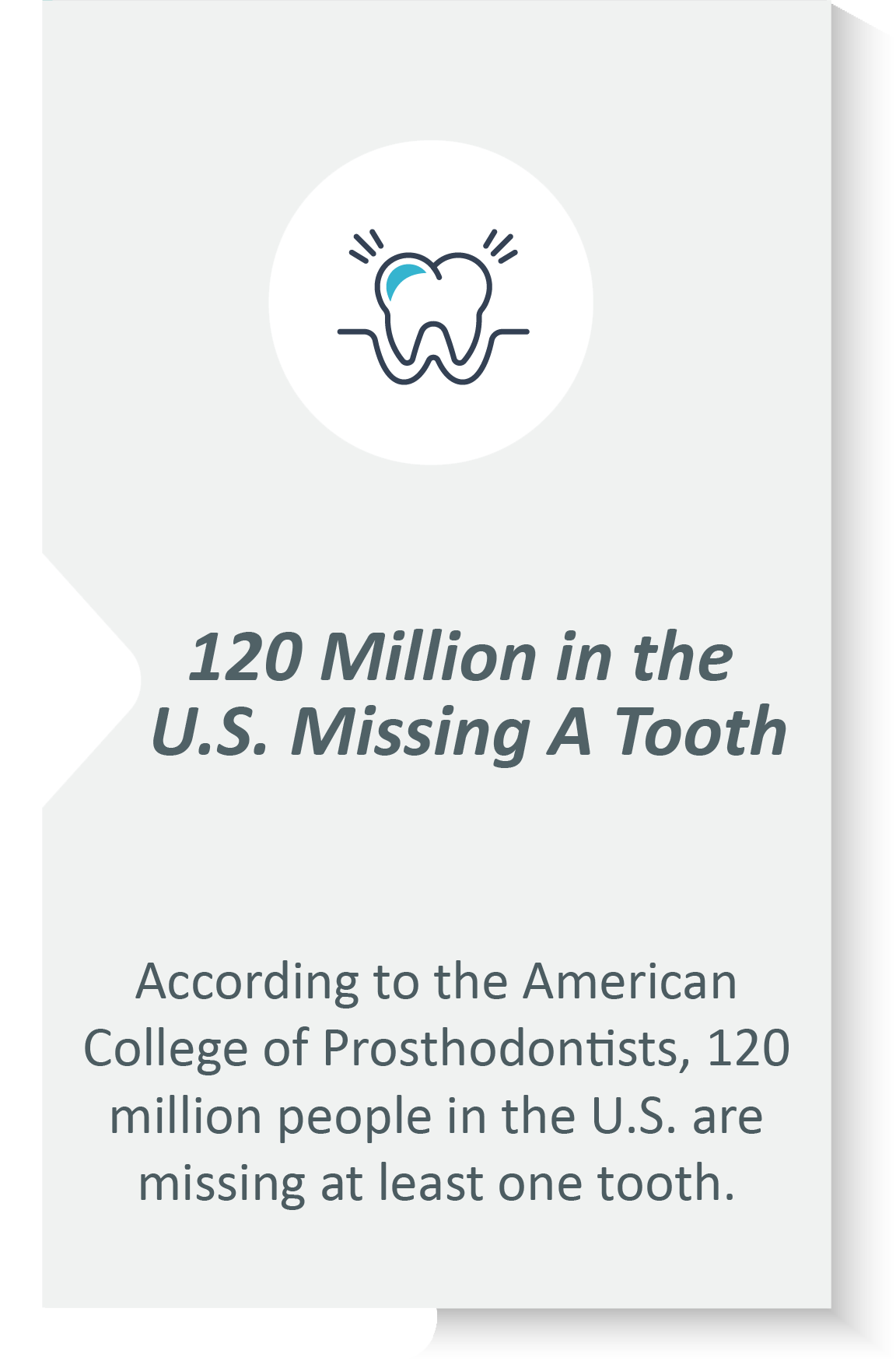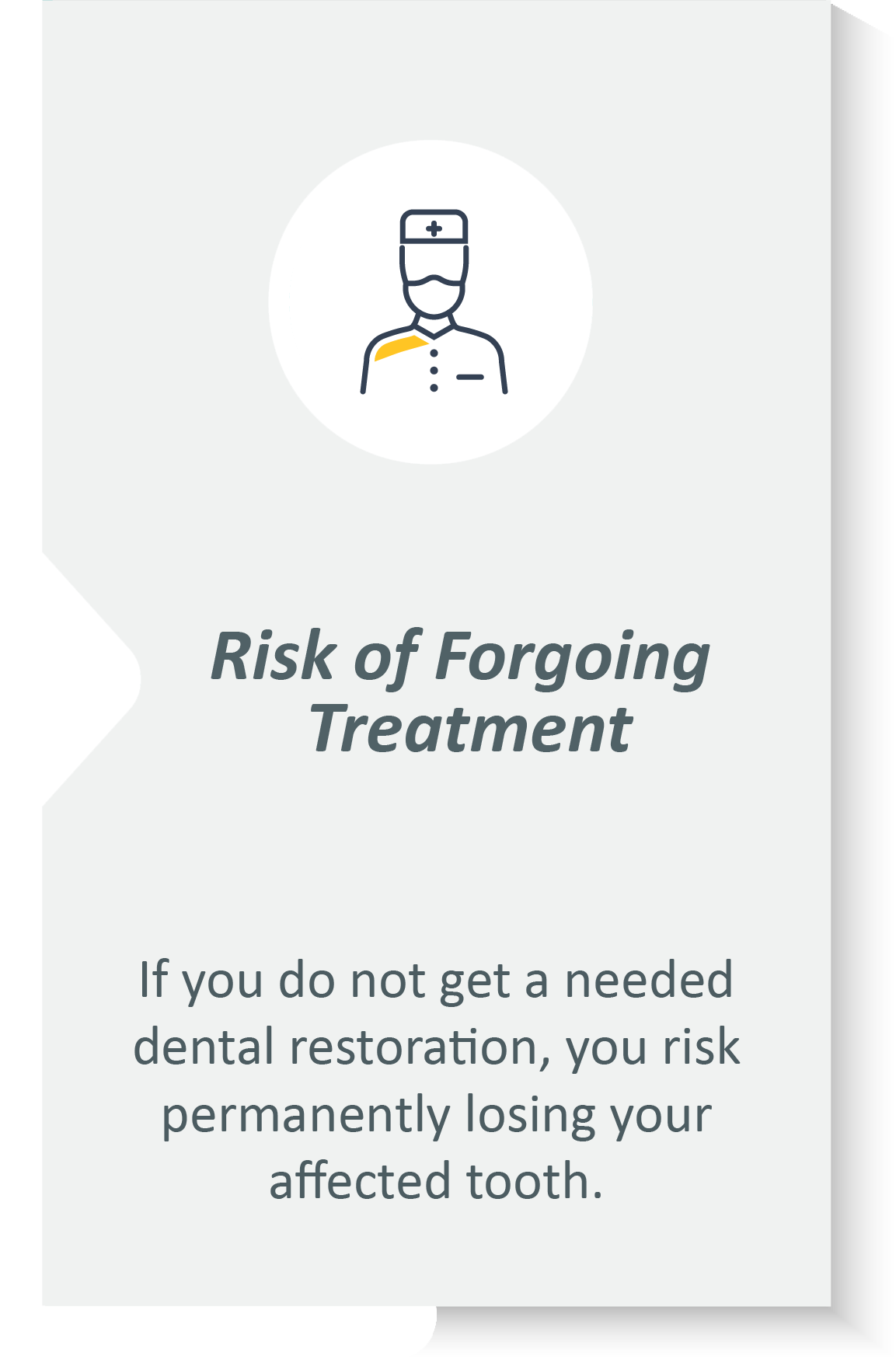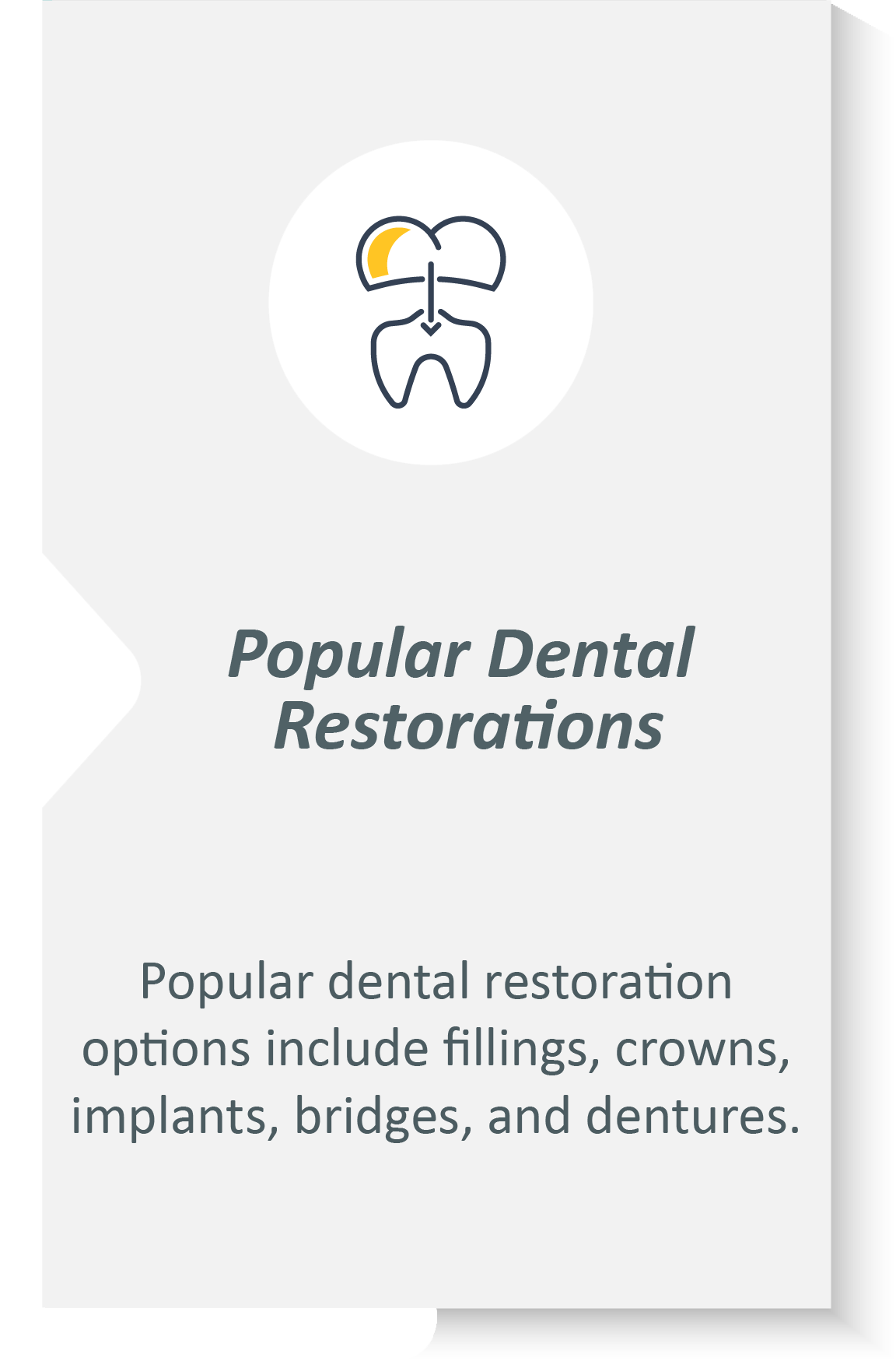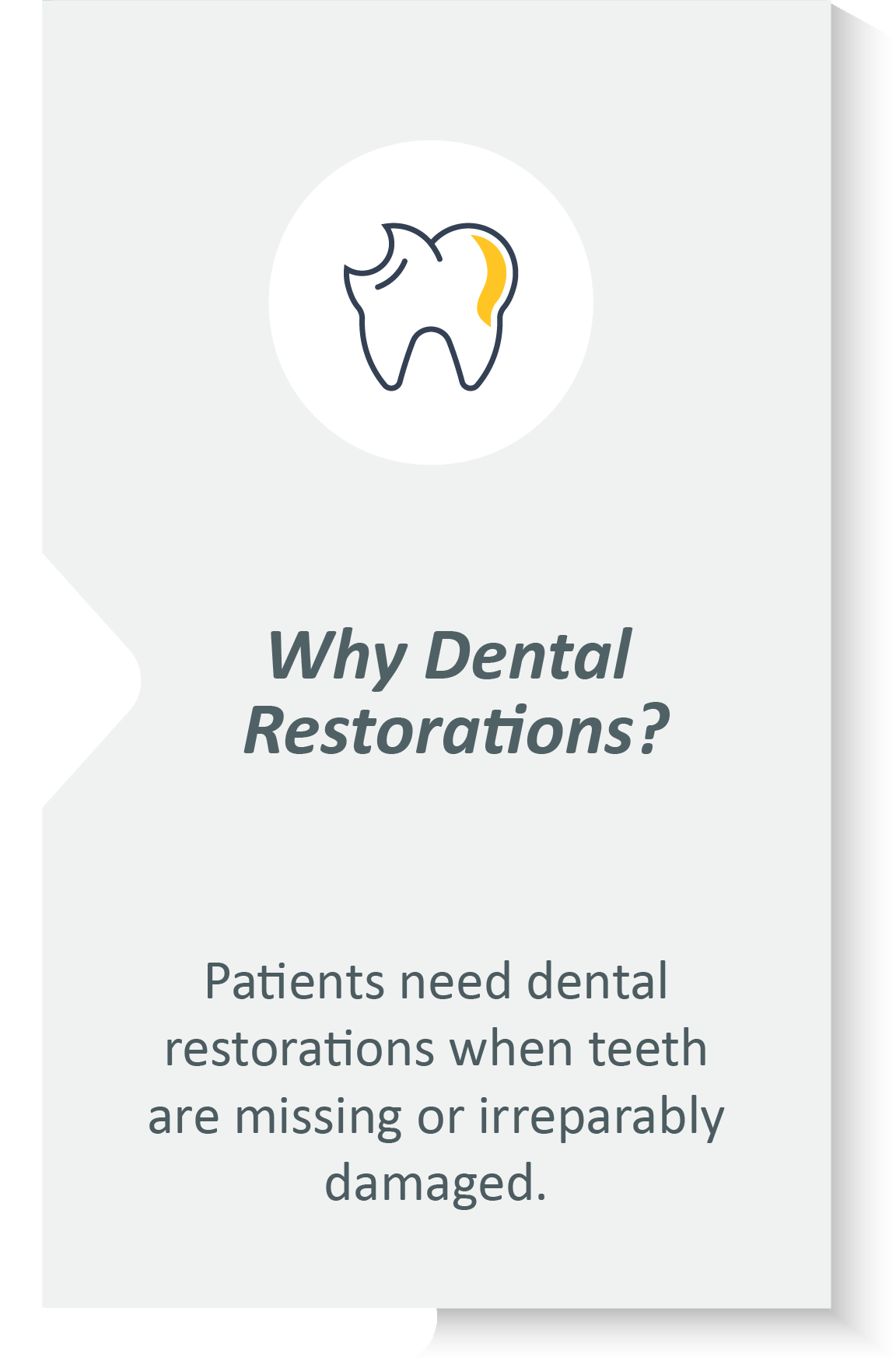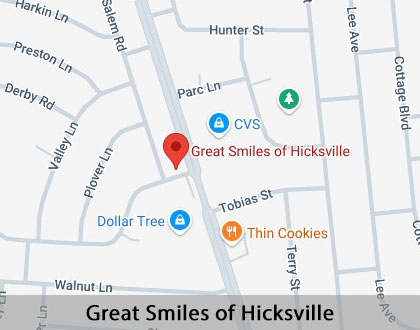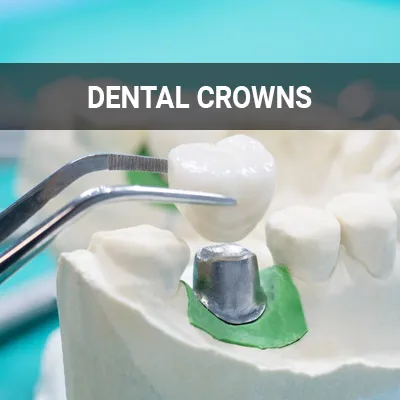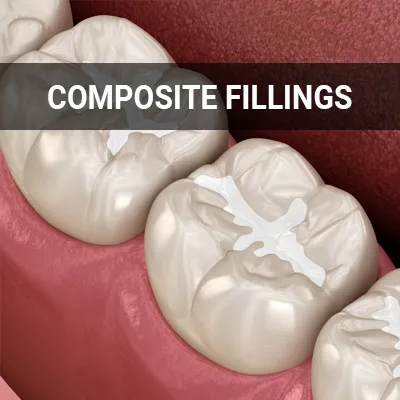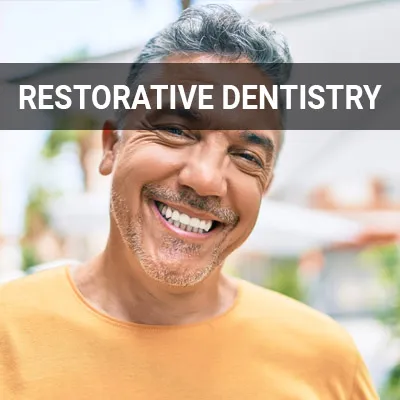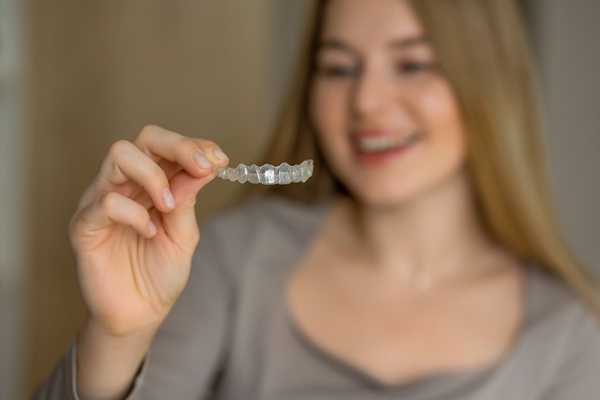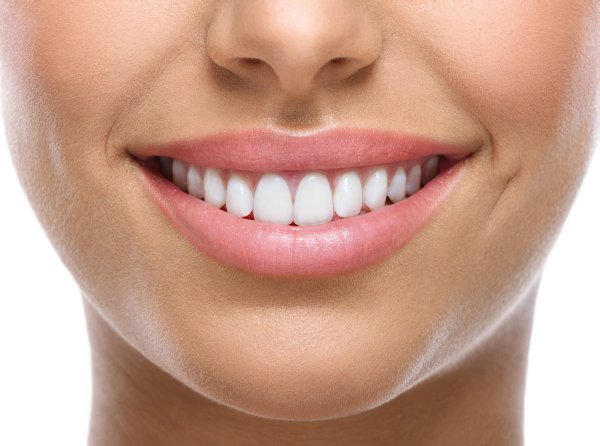Dental Restorations Hicksville, NY
If you are struggling with teeth that are missing, cracked, chipped, or in need of replacement, a dentist can help by making repairs via a process known as a dental restoration. There are many different forms of dental restoration, so it is important to be aware of all of the options available to you before deciding how you would like to restore the health of your teeth.
For more information about what restorative dental procedures might be best for your particular situation, our team at Great Smiles of Hicksville in Hicksville is here to help. Call us at (516) 806-5067 to learn more.
Understanding Dental Restoration
Dental restoration aims to restore the functionality of the mouth and teeth. It includes various dental procedures that repair damaged or missing tooth structure resulting from poor oral hygiene, infection, or trauma to the teeth or gums. There are two types of dental restorations, direct and indirect.
Besides restoring the mouth to a functional state, dental restoration also aims to preserve as much of the patient's natural teeth as possible. Patients may experience missing tooth structure due to decay, chips or fractures, or deterioration of a previously placed restoration. Dental restorations can help fix such problems.
“Dental restoration aims to restore the functionality of the mouth and teeth.”
Understanding Direct Dental Restoration
A direct dental restoration is a dental repair completed within the confines of the mouth at the point of care. This means no assembly or manufacturing outside of the mouth is necessary. The restorative work is performed by Great Smiles of Hicksville directly onto the tooth or teeth in question.
A more familiar name for direct dental restoration is a "filling." During the filling procedure, the dentist uses dental material to repair a damaged tooth and then hardens the material with a special type of light to completely seal the area off and prevent further damage or decay. This restores the tooth to its full function, and a filling can often closely mimic the appearance of the original tooth.
Types of dental filling materials include:
- Amalgam: This filling material is a metal alloy, and it is considered to be the “gold standard.” Amalgams are well-suited for teeth that bear a heavy load.
- Resin Composite: This is a filling made of a combination of organic and inorganic substances that provide a tooth-colored alternative to amalgams.
- Glass Ionomer: This is a filling that can be applied quickly and is less susceptible to moisture, making it ideal for pediatric patients.
“A more familiar name for a direct dental restoration is a ‘filling.'”
Indirect Dental Restoration
Indirect dental restorations are fabricated outside of the mouth before being placed inside the mouth at the treatment site. These customized tooth replacements include:
- Bridges: Bridges restore gaps from one or more missing teeth to mimic the look, shape, and function of natural teeth.
- Crowns: A dental crown is a tooth-shaped cap that restores a tooth’s shape, size, strength, and appearance.
- Implants: Dental implants are artificial tooth roots placed to support replacement teeth so they can feel, look, and function naturally.
- Inlays: Inlays mold to the cusps areas and replace minor tooth structure loss due to decay.
- Onlays: Onlays, also called partial crowns, are more extensive than inlays and can cover one or more cusps to repair more extensive tooth decay.
- Veneers: Veneers are thin coverings applied to the front, visible part of the tooth to restore stained, chipped, or worn-down teeth.
“Indirect dental restorations are fabricated outside of the mouth before being placed inside the mouth at the treatment site.”
Check out what others are saying about our dental services on Yelp: Dental Restorations in Hicksville, NY
When a Dental Restoration Is Necessary
Dental restoration can help weakened teeth due to severe decay or damage and help prevent further complications. Direct dental restorations or fillings are necessary to stop the decay process while leaving the teeth intact. Fillings can also restore fractured, broken teeth, or worn down teeth resulting from misuse such as nail-biting or tooth grinding.
Indirect dental restorations are necessary when a filling is not enough to restore teeth functionality. Crowns are good restorative options for unstable teeth, while a bridge can replace multiple damaged teeth to restore proper chewing function. Additionally, a dental implant can replace a missing tooth and prevent problems like jawbone erosion and impaired chewing.
“Dental restoration can help weakened teeth due to severe decay or damage and help prevent further complications.”
Questions Answered on This Page
Q. What is dental restoration?
Q. What is an indirect dental restoration?
Q. When is a dental restoration necessary?
Q. What happens during a direct dental restoration?
Q. Who can receive a dental restoration?
People Also Ask
Q. What are the benefits of restoration dentistry?
Q. What methods are available to repair a chipped tooth?
Q. What factors should someone consider when looking for a dentist who is the right fit?
Q. What dental issues can a smile makeover improve?
Q. How can you save a tooth with a root canal?
Eligibility for Dental Restoration
Patients experiencing damage to one or more teeth due to decay, chipping, or trauma are likely eligible for a dental restoration. Depending on their specific situation, Great Smiles of Hicksville will work with each patient to determine which restorative option is right for them. Having a conversation about personal preferences is particularly important if the restoration occurs in the front of the mouth, where a tooth is more visible.
Children and adults are both candidates for dental restorations. A child may benefit more from a direct dental restoration, if possible, as it involves fewer steps. Patients that are pregnant should talk to their dentist about alternative options, but the American Dental Association reports that dental procedures involving anesthetics are safe during pregnancy.
“Children and adults are both candidates for dental restorations.”
Frequently Asked Questions
Q. Is a dental amalgam safe?
A. According to the American Dental Association (ADA), dental organizations worldwide agree that amalgams are safe restorative dental materials. Over the years, there have been reports of various negative health effects associated with amalgam, but many scientific reviews have reaffirmed their safety.
Q. What are all the types of dental restorations?
A. Dental restorations are any treatments done to restore the function and/or appearance of the teeth. Restorations can include fillings, crowns, bridges, dental implants, inlays and onlays, and composite or dental bonding.
Q. How common are crowns?
A. If you are considering getting a crown placed, or your dentist has recommended one, you are not alone. According to the American Academy of Dentistry Journal, about 40 million crowns are placed each year. Dentists of all types are generally familiar with the procedure.
Q. What is the difference between an inlay and onlay?
A. While inlays and onlays are both types of indirect dental restorations, they differ in size. An inlay is created to fill in a tooth cavity that occurs between tooth cusps. An onlay is created to fill in a tooth cavity that includes one or more tooth cusps, so by definition, it is more expansive than an inlay.
Q. What are the steps involved in amalgam dental filling?
A. During an amalgam dental filling, your dentist will numb you first to make sure that you do not feel discomfort during the procedure. Then, your dentist will use an instrument such as a drill or laser to remove any decayed area. Your dentist will test to ensure that all of the decay has been removed and clean out the debris. Lastly, your dentist will apply the filling material and polish the tooth.
Dental Terminology
Helpful Related Links
- American Dental Association (ADA). Glossary of Dental Clinical Terms. 2025
- American Academy of Cosmetic Dentistry® (AACD). Home Page. 2025
- WebMD. WebMD’s Oral Care Guide. 2025
About our business, license, and website security
- Great Smiles of Hicksville was established in 2012.
- We accept the following payment methods: American Express, Cash, Check, Discover, MasterCard, and Visa
- We serve patients from the following counties: Nassau County
- We serve patients from the following cities: Hicksville, Levittown, Plainview, Jericho, Farmingdale, East Meadow, Westbury, Massapequa, Wantagh and Mineola
- NY (License #51241). View License Information and Specifics
- National Provider Identifier Database (1093724528). View NPI Registry Information
- Healthgrades. View Background Information and Reviews
- Norton Safe Web. View Details
- Trend Micro Site Safety Center. View Details
Back to top of Dental Restorations

